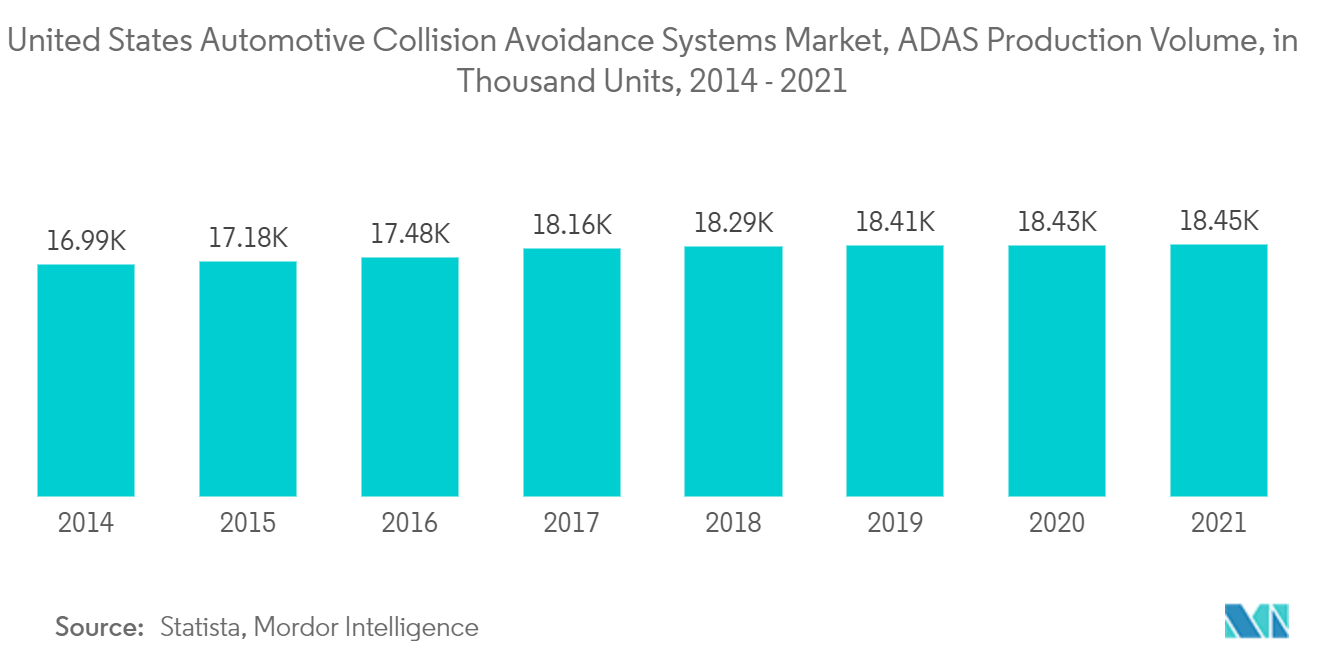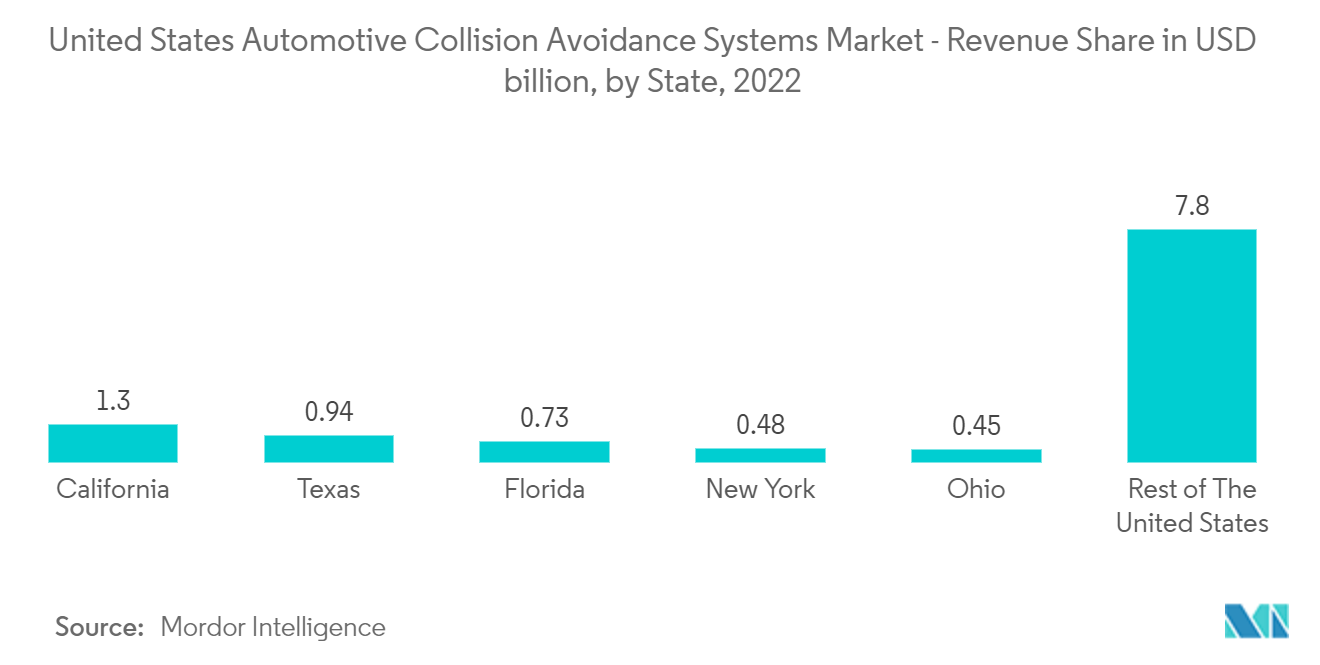Market Trends of United States Automotive Collision Avoidance Systems Industry
Warning Function Dominating the Market
- The warning function type system of the collision avoidance system has been consistently on top of usage in the United States since 2018, and it is expected to continue the same trend. The warning function type system is closely followed by the adaptive function type system.
- The blind-spot warning system detects and warns the drivers if they are unable to see alongside their vehicles. It has provided an impressive 23% decrease in lane-change collisions with injuries.
- Advanced forward-collision warning systems with automatic emergency braking systems (AEBS) can automatically stop a vehicle from forward collision or at least reduce collision impact force at high speeds. Forward collision warning with auto-emergency braking has provided a 20% reduction in front-to-rear crashes with injuries.
- With the advancement in technology and technological advancements in the advanced driver-assistance system (ADAS) segment, adaptive cruise control is expected to become more popular, as adaptive cruise control (ACC) will be an important and mandatory feature for autonomous vehicle technology in the future.
- The ACC is designed to help vehicles maintain a safe following distance and stay within the speed limit. This system adjusts a car's speed automatically, so drivers do not have to. Several premium car original equipment manufacturers (OEMs) include adaptive cruise control features in their latest models as a basic and mandatory feature, while other OEMs offer this feature as an optional feature at an additional cost.

California Ranks First Among Other States in the US Market
- California is leading the market share as an individual state. Top-selling vehicles in California are Honda Civic, Honda Accord, Toyota Camry, Tesla Model 3, and Ford F Series. These models are either equipped with mandatory or optional collision avoidance systems.
- The state is also home to the luxury car market, which is expected to increase the demand for automotive collision avoidance systems. In September 2012, California became the third state to allow self-driving cars to operate on state roads. This has led to many companies investing in the development of safety technologies for autonomous driving.
- Texas is home to one of the largest original equipment manufacturers (OEMs) in the world, General Motors and Toyota. Texas is one of the nine states to allow autonomous driving. The state is also home to collision avoidance systems manufacturers like Continental AG and others, which is a major factor contributing to the market growth during the forecast period.
- Florida ranks second in the sale of luxury cars across the United States, which is expected to help the market growth as most of the luxury cars come with advanced collision avoidance systems. The state has passed a law that allows autonomous cars to operate on state roads, thus opening the market for autonomous vehicle manufacturers.
- In 2017, New York legalized testing autonomous vehicles, but only two companies, namely Audi and Cadillac, tested their AVs. Audi drove about 170 miles around Albany, while Cadillac tested its cars on a drive from New York City to New Jersey. The state recorded the third-highest sales of luxury cars. Mercedes-Benz S class was the most sold car in the New York state. This car features a lane assist, an automated emergency braking system, an active body control system, a hands-on steering wheel sensor, and night vision.
- In 2018, Ohio legalized autonomous vehicles. To attract AV researchers, developers, and manufacturers, the government created DriveOhio, a new division of the state Department of Transportation, which allows any company to test.
- In December 2020, with the increasing government emphasis and support, Waymo announced that it would be building a testing center in Ohio to test its next-generation autonomous cars and trucks. With government initiatives and companies setting up their testing facilities, the state is expected to witness a high growth rate during the forecasted period.



